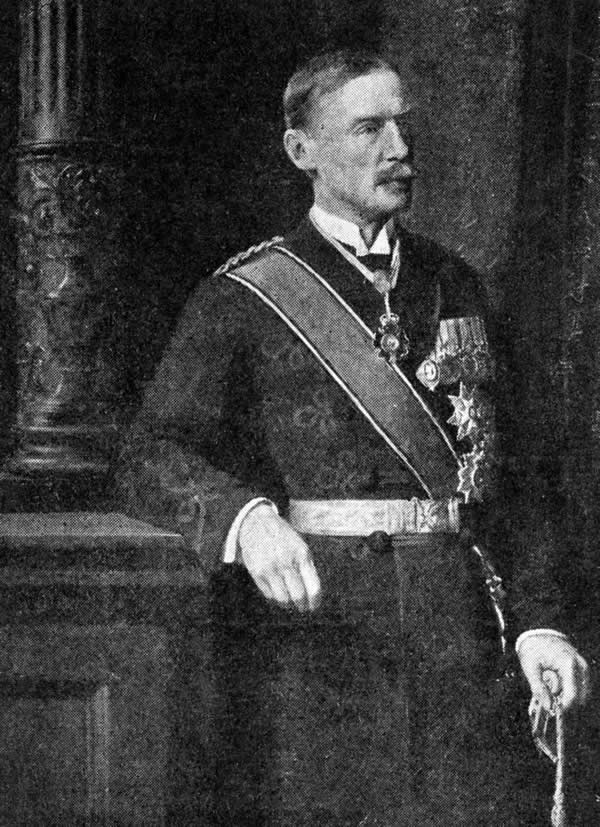 |
| Sherif Husayn |
The Sherif Husayn–McMahon Correspondence was a secret agreement between Sherif Husayn, representing the Arabs, and the British over the future of Arab territories in the Ottoman Empire. Sherif Husayn was sherif, or ruler, over the Muslim holy city of Mecca.
A member of the Hashemite family, Husayn was a direct descendant of the prophet Muhammad and consequently had both political and religious influence. An Arab nationalist, Husayn wanted one unified, independent Arab state. Personally ambitious, he also wanted to be the ruler of that state.
In 1915 Sherif Husayn sent a secret letter to the closest high-ranking British official, Henry McMahon, the British high commissioner in Egypt, proposing that the Arabs would fight on the side of the British in World War I in exchange for an independent state when the war was over. Because the letters had to be hand delivered by secret agents from Mecca to Cairo and back, the correspondence extended from July 1915 to January 1916.
  |
Although McMahon, who did not speak Arabic or know much about the Middle East, had nothing to do with the British responses that were written by government officials in London, as the highest-ranking British official in Cairo his name was affixed to the texts. After Husayn's letters were translated into English, they were put into secret code to be transmitted to London for final decisions as to what responses the government wished to make.
In his first letter, Husayn delineated the borders for the proposed Arab state. The boundaries were to run along the Red Sea and include the Arabian Peninsula, but not Aden, which was already a British colony; the state would also include present-day Iraq, Syria, Lebanon, Israel-Palestine, Jordan, and the area around Alexandretta, in present-day Turkey.
 |
| Sir Henry McMahon |
All this territory was overwhelmingly Arab ethnically, linguistically, culturally, and historically. Husayn also sent his son Faysal to ascertain whether Arab nationalists in greater Syria would support the proposed Arab state.
They agreed to back Sherif Husayn's plans. As an excuse for this fact-finding mission, Faysal also visited Istanbul to meet with the Committee of Union and Progress, the virtual rulers of the Ottoman Turkish Empire, which was fighting on the side of Germany and the Central Powers in the war.
This was a highly dangerous mission, as in Turkish eyes Sherif Husayn's proposals were treasonous. In the summer of 1915, the Turks publicly hanged several Arab nationalists in downtown Beirut. The square where the executions took place is still known as Martyrs Square in present-day Lebanon.
The British responded that discussion of the borders of the Arab state was premature. Sherif Husayn then ceded Alexandretta, and Britain replied that it wished to omit most of the area in present-day Lebanon because the French had interests there. They also wanted to omit most of present-day Iraq.
Throughout the letters, the territories were referred to by the Turkish administrative terms of vilayets, or provinces, which did not precisely conform to the boundaries of present-day nations in the Middle East. Although the British did not communicate their interests to Sherif Husayn, they knew about the oil reserves in Iraq and were anxious to maintain control over Iraq for economic and strategic reasons.
Nor was Sherif Husayn informed about the secret negotiations simultaneously taking place between the British and the French regarding Arab territories. These secret negotiations resulted in the Sykes-Picot Agreement of May 1916, which in part seemed to contradict the agreement the British government was making with Husayn.
By early 1916 Sherif Husayn had essentially agreed to fight on the side of the British in exchange for what he believed would be one Arab state, possibly minus Lebanon and parts of Iraq, which, as predominantly Arab, he believed would ultimately become part of that state.
Palestine was not specifically mentioned by name in the exchange, but Sherif Husayn clearly believed that it would be included in the proposed Arab state. On the basis of this correspondence, the Arabs rose up in armed revolt against the Turks in June 1916 and fought on the side of the British for the duration of the war.
Husayn's forces immediately secured Mecca and much of the coast along the Red Sea but failed to take Medina, which remained in Ottoman Turkish hands until the end of World War I. The British supported the revolt with money, supplies, and advisers, including T. E. Lawrence, who was known as Lawrence of Arabia.
The Arab forces used mostly guerrilla warfare tactics, attacking the Ottoman Turkish flanks and blowing up railway and communication lines as the British army advanced northward through Palestine and into Syria and Lebanon in 1917 and 1918.
The publication in late 1917 of the Balfour Declaration giving British support to Zionist aspirations for an independent Jewish nation in Palestine was immediately opposed by Sherif Husayn and the Arabs on the grounds that the area was Arab and that the declaration contradicted the earlier agreement made with Sherif Husayn.
The controversy over the conflicting terms of the three wartime agreements—the Sherif Husayn– McMahon Correspondence, the Sykes-Picot Agreement, and the Balfour Declaration—became a point of contention at the Paris Peace Conference and continued to be debated into the 21st century.